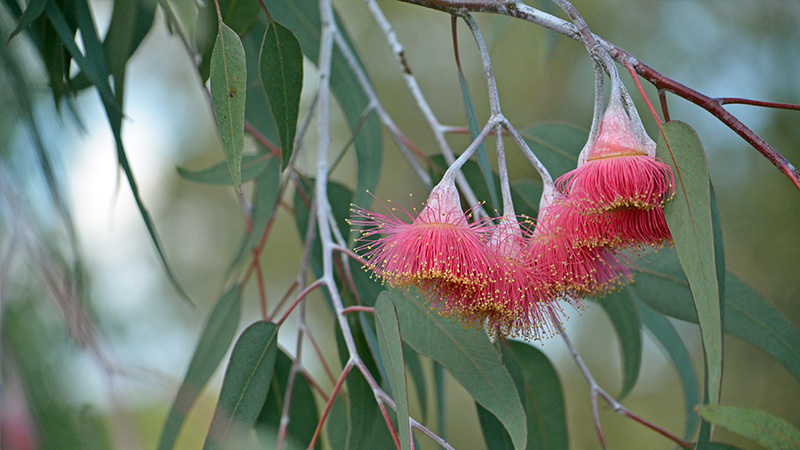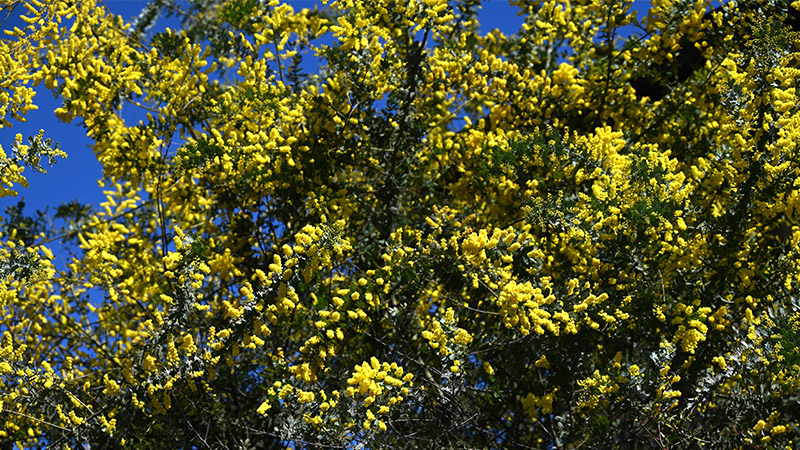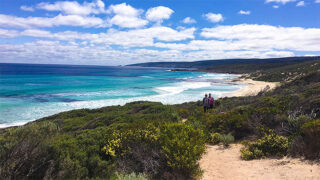While the country is renowned for its distinctive animals, native plants in Australia are also unique. In fact, around 4 out of 5 plant species in Australia are found nowhere else on Earth! Here’s a fact file on what you can expect from Australian flora, from flowers to trees.
#1 Plenty of room for native plants and trees to thrive
Australia is a big place – the sixth-largest country in the world by land area. Around 40 percent of that area is considered “undisturbed wilderness” – that is, untouched by human development. That’s an area comparable with the Amazon rainforest! This is partly why as many as 24,000 different plant species thrive across the country.
#2 Food for koalas
Ever wondered why koalas look so sleepy all the time? Part of it is because their diet consists almost solely of eucalyptus leaves. These are extremely low in energy (around 5 percent). Fortunately for this cute Australian animal, the leavess contain most of the water they need – which means they don’t need to expend what little energy they have to climb down their tree in search of a drink. The other advantage with the eucalyptus diet is that the leaves contain toxins (akin to cyanide) that other animals can’t tolerate. And that means there’s more on offer for the koalas! (This toxicity is also why eucalyptus is an excellent insect repellent.)

There are 700 species of eucalyptus, a fast-growing evergreen, and most of them are native to Australia. Commonly called “gum trees”, these plants are ubiquitous across the country. In fact, three quarters of all forests in the country are eucalypt forests.
#3 Australia’s national flower, the wattle
Wattles (Acacia) are the largest genus of flowering plants in Australia, found everywhere from the desert to the rainforest. There are almost 1,000 species of wattle here, out of around 1,380 known in the world.

One particular wattle, the Acacia pycnantha or golden wattle, is considered Australia’s floral emblem. The plant’s vibrant gold flowers and green leaves mirror the national colours of Australia. It’s also an extremely resilient plant, which reflects a trait of the Australian character. The golden wattle appears underneath the Australian Coat of Arms.
Indigenous Australians historically used the wattle for its honey and the bark of the tree for its antiseptic properties.
#4 Wild and wonderful Australian flora
One of the most spectacular displays of plant life in Australia can be found in Western Australia during the winter and spring months. That’s when the grasslands of that state explode in colour with over 12,000 species of wildflower in full bloom. It’s considered the biggest natural exhibition of wildflowers in the world. Dominant flower colours include pink, white, purple and yellow.
The good news is that you don’t have to travel too far afield to see the show. While certain regional areas are justifiably famous for their carpets of wildflowers, even parks in parts of the WA capital Perth turn up the colour quotient between June and November. Find more ideas for wildflower itineraries in Australia here.
#5 Native plants as food
In recent years, the use of native plants in cooking has really taken off. In fact, there are high-end restaurants in different cities that are dedicated to utilising native ingredients and Indigenous “bush tucker” techniques, from foraging to preparing. Among the items you’ll commonly find on menus today are finger limes, wattleseed, saltbush, pepperberry, Kakadu plum, macadamia nuts, lemon myrtle and bush tomato.
5 more facts on native plants in Australia
- The Blue Mountains west of Sydney are named for the blue haze that’s said to be created from the oil in eucalyptus trees.
- The waratah, which once contended with the wattle to be named Australia’s national flower, is the emblem and name of the New South Wales professional rugby union team. (Hence their nickname, “The Tahs”!)
- Paperbarks (melaleuca) are commonly found on the edges of creeks and swamps, and the soft bark was traditionally used for storing and carrying food. Essential oil from the paperbark is sold as tea tree oil.
- The Kangaroo Paw is a native plants of Western Australia with a flower that looks very similar to … guess what?
- Named after Sir Joseph Banks, the famous botanist who travelled with Captain James Cook’s voyage to Australia in 1770, the Banksia is also well known to Australians as inspiring some of the characters in the Snugglepot and Cuddlepie children’s stories, by May Gibbs (1877-1969).



